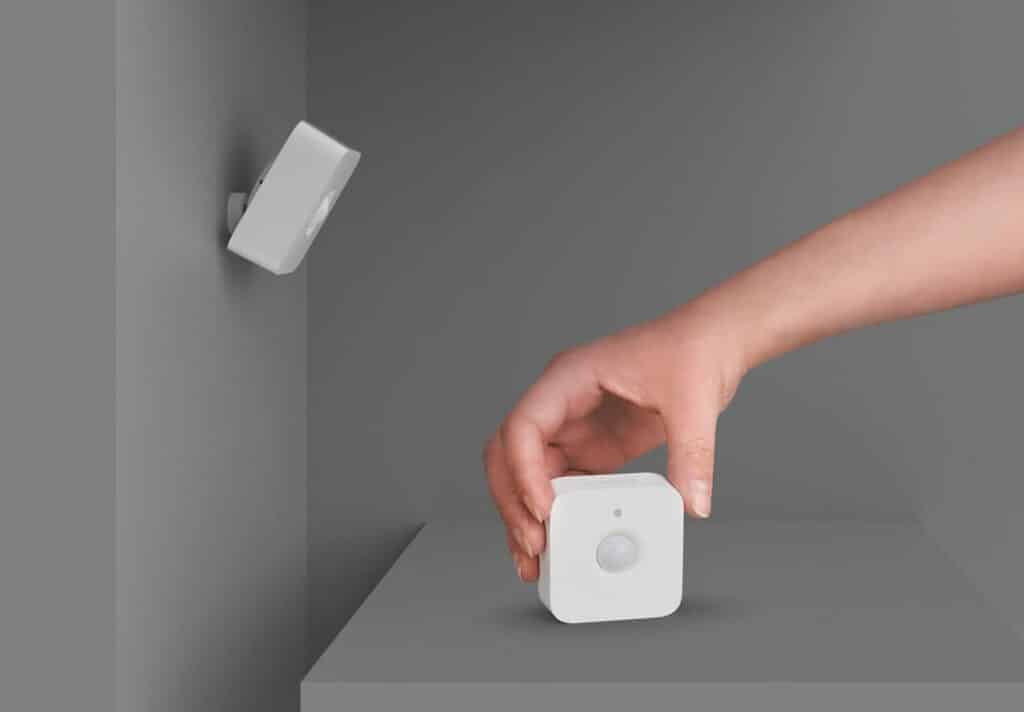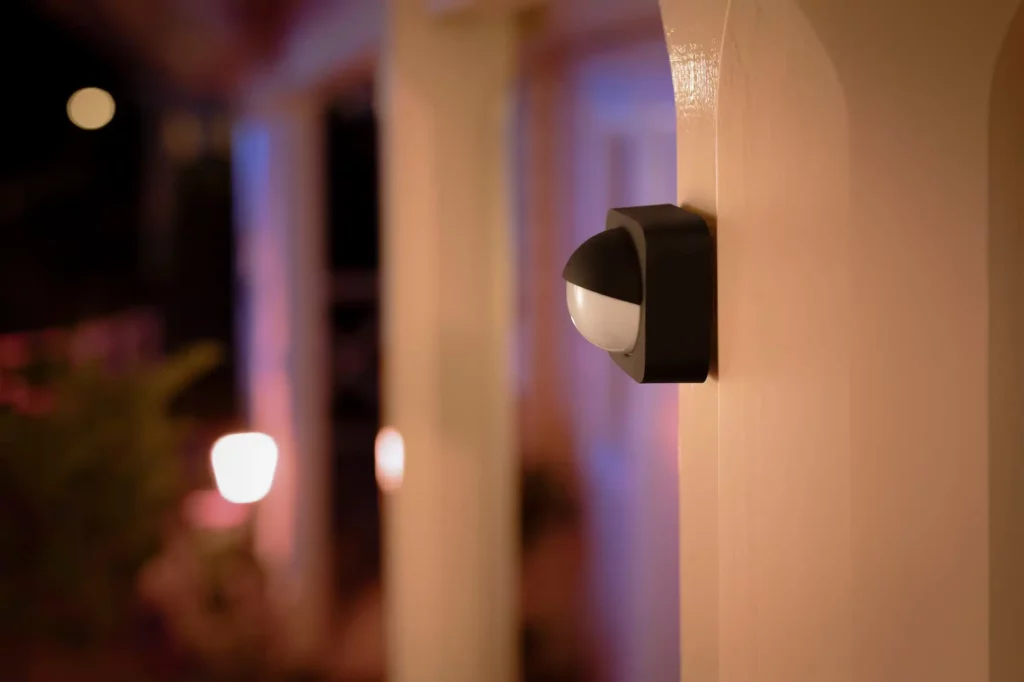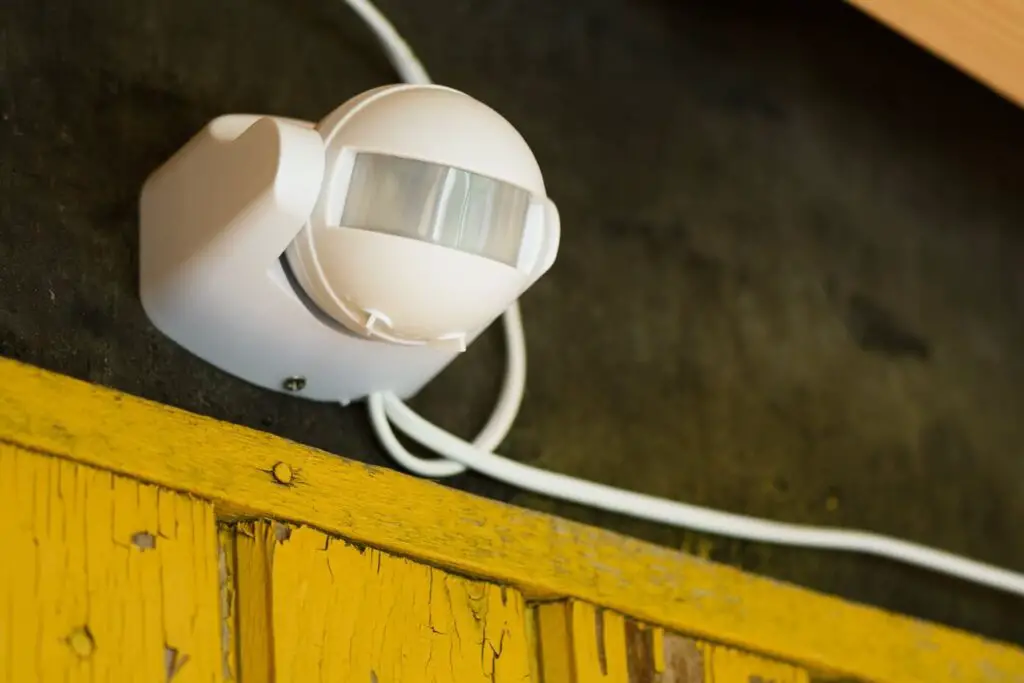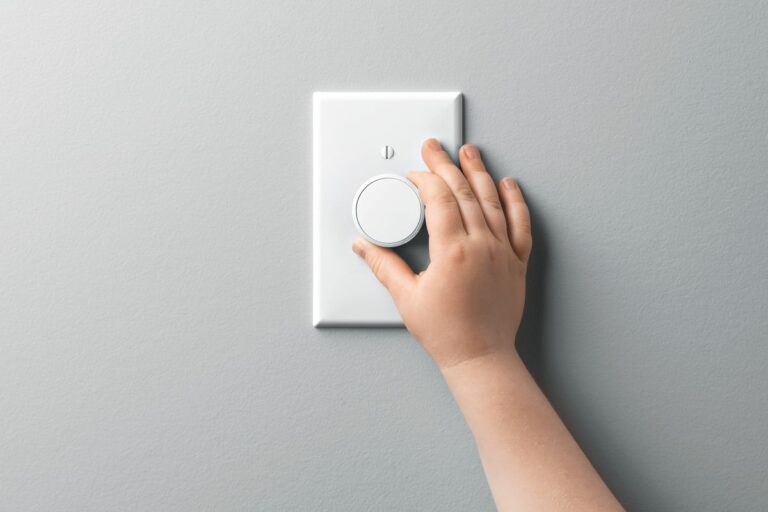Introduction
Locate the reset button on your Lutron motion sensor switch. Depending on the model, the reset button may be labeled “RESET” or “R” and is typically located either on the front or back of the switch. Before initiating the reset process, make sure to turn off the power supply to the motion sensor switch. Locate the circuit breaker or fuse box that controls the switch and flip the corresponding switch to the “Off” position.
With the power turned off, press and hold the reset button on the motion sensor switch using a small pointed object such as a paperclip or pen tip. Keep the button pressed for approximately 10-15 seconds. While still holding the reset button, turn the power supply back on by flipping the circuit breaker or fuse switch to the “On” position. Keep holding the reset button until you observe the motion sensor switch’s LED indicator start flashing rapidly or the lights connected to the switch momentarily turn off and on.
Once the LED indicator starts flashing or the lights cycle on and off, release the reset button. The motion sensor switch will complete the reset process, and the LED indicator will return to its normal state. After the reset, it’s advisable to test the functionality of the motion sensor switch. Walk within the detection range of the sensor to ensure that it activates the connected lights as expected.

Why is my motion sensor light switch not working?
If your motion sensor light doesn’t work, the bulb may be broken. Try replacing it with a new one. Great if it works correctly after that! If not, consider hiring a professional.
Power supply issues are a common cause of motion sensor light switch failure. Check the circuit breaker or fuse box to ensure the switch is powered. A tripped circuit breaker or blown fuse could cut switch power. Often, resetting the breaker or changing the fuse fixes the problem.
Motion sensor switches might malfunction due to improper wiring during installation or repair. Make sure the wire is connected per the manufacturer’s instructions. The switch may malfunction due to loose connections. Contact a licensed electrician to fix any wiring concerns.
Motion sensor switches detect movement with adjustable range and sensitivity. If the lights don’t turn on, the sensor range or sensitivity may be too low or high. See the switch’s manual for details on how to alter these settings. Try increasing range or decreasing sensitivity to fix the issue.
Obstructions near the motion sensor can impair its accuracy. Check the sensor’s view for obstructions. Curtains, plants, and other obstructions count. External elements like heat sources or direct sunlight might cause misleading motion detections. Shielding or sensor location can reduce interference.
What are the settings on a motion sensor?
There are 3 settings on a motion sensor light: sensitivity, timer, and lux. These 3 settings determine how sensitive the light is to movement, how long the light will stay on after detecting movement, and what level of darkness the light will turn on in.
The detection range setting determines the distance at which the motion sensor can detect movement. It allows you to define the coverage area of the sensor. Depending on the specific model, you may be able to adjust the range to cover a small area or a larger space. Keep in mind that a wider detection range may also result in more false triggers from distant movements or external factors like wind or passing vehicles.
The time delay setting determines how long the lights or other connected devices will remain activated after motion is detected. This setting is crucial to avoid unnecessary activations or to customize the duration of lighting or other triggered actions. It typically ranges from a few seconds to several minutes, depending on the device and user preferences.
Some motion sensors include ambient light sensing capabilities. This feature allows you to specify the level of ambient light at which the motion sensor should activate. For instance, you may want the sensor to activate the lights only when it is dark or when the ambient light level falls below a certain threshold. This helps conserve energy by preventing unnecessary activations during daylight hours.
Certain advanced motion sensors combine multiple technologies, such as infrared (PIR) and ultrasonic sensors, to enhance accuracy and reduce false triggers. These sensors often have settings that allow you to configure the behavior of each sensor independently or adjust the sensitivity and response of the combined system. This enables fine-tuning to match specific requirements and minimize false alarms.
How do you set a motion sensor light switch to stay on?
One way to disable motion detection and keep the light on is to swiftly flip the motion sensor on and off. Turn the motion sensor off, wait 10 seconds, and then turn it on to return to motion detection mode.
Some motion sensors have manual override switches. This switch provides manual light control regardless of motion sensing. Find a “On,” “Override,” or similar switch or button on the motion sensor switch. Turn the switch to “On” to keep the lights on until you turn them off or return it to automatic.
Most motion sensor switches offer a time delay setting that controls how long the lights stay on after motion is interrupted. By setting the time delay to maximum, you can keep the lights on longer. To find and alter the switch’s time delay, consult its handbook. Only continuous motion inside the sensor’s detecting range will keep the lights on with this strategy.
Sometimes a bypass switch can be installed beside the motion sensor switch. This bypass switch disables the motion sensor and keeps the lights on. The bypass switch disables motion sensor light control by disconnecting it. To verify if this is possible and assure appropriate installation, consult a certified electrician.
You can also wire the motion sensor switch in parallel with a manual switch. This arrangement lets you control lights without the motion sensor. Turning on the manual switch overrides the motion sensor and keeps the lights on. After turning off the manual switch, the motion sensor works normally.
How do you light a motion sensor switch?
Press each light switch setting four times quickly. After the light turns on, turn it off and wait 5–7 seconds before turning it on again. Reset the motion detecting unit and keep the light off.
Turn off the power to the work area before installing the motion sensor switch. Find the circuit breaker or fuse box and turn it “Off” for safety.
Unscrew the mounting screws to remove an old light switch from the wall box before installing a motion sensor switch. Note the positions of the old switch wires as you carefully separate them.
Most motion sensor switches need a neutral wire. Check your electrical box for neutral wires. Consider hiring an electrician or using a motion sensor switch optimized for installations without a neutral wire.
Connect the wires to the motion sensor switch per manufacturer’s instructions. The electrical box’s live (black or red) wire is usually connected to the switch’s “Line” terminal. Light wires attach to the “Load” terminal. Connect the neutral (white) wire to the switch terminal if needed. Secure all connections.
Use screws to secure the motion sensor switch to the electrical box. Make sure it fits snugly and aligns with the wall plate.
Adjust the switch settings to your liking after installation. Most motion sensor switches provide sensitivity, range, and delay adjustments. The user handbook or instructions for your switch will explain how to alter these settings.
How do you turn off a motion sensor switch?
How to Turn Off Motion Controls on Nintendo Switch in 6 Steps (with Photos)
- Step 1: Launch a Compatible Game.
- Step 2: Open the Settings Menu.
- Step 3: Scroll Down to Motion Controls.
- Step 4: Toggle Motion Controls to Off.
- Step 5: Go Back to Game.
- Step 6: Choose Button Controls If Necessary.
Motion sensor switches typically have a time delay setting that determines how long the lights or devices stay on after motion is no longer detected. By adjusting the time delay setting to its minimum value, you can effectively reduce the duration of the lights or devices staying on. This essentially achieves the same result as turning off the motion sensor switch since it will quickly deactivate after motion ceases.
If you want to completely turn off a motion sensor switch, you can disconnect its power supply. Locate the circuit breaker or fuse that controls the motion sensor switch and flip the corresponding switch to the “Off” position. This action will cut off power to the switch, effectively deactivating it. However, keep in mind that this method will also turn off any other devices or lights connected to the same circuit.
For a permanent solution, you may consider removing the motion sensor switch entirely. This involves disconnecting the wires from the switch and replacing it with a standard light switch or cover plate. Remember to turn off the power supply before attempting to remove or replace any electrical switches, and consult a qualified electrician if you are unsure about the process.

How do I reset my motion light stays on all the time?
Motion Light Detector Troubleshooting
Turning a motion sensor light off and on for 30 seconds or more resets it best. A homeowner can also switch off the electricity at the breaker to reset it. That may not work, so blame the sensor or bulb.
Motion Sensor Settings: Check the motion sensor settings. Check for sensitivity, time delay, and detection range modifications. A motion sensor with great sensitivity or a long latency may keep the light on. Follow your motion light’s manufacturer’s directions to adjust the settings.
Clean the Motion Sensor: Dirt, dust, and debris might affect its performance. Use a gentle cloth or solution to clean the sensor lens. Clear the lens of obstacles that could cause false detections. Turn off the power switch or circuit breaker that controls the motion light to reset it. Leave the power off for 10 seconds to reset completely. After waiting, turn on the power and test the light.
Wiring Connections: Check the motion light-electrical supply wiring. A light that stays on may be due to loose connections. Check all wire connections for damage, insulation, and security. Contact a licensed electrician to fix any wiring concerns.
Replace or Upgrade the Motion Light: If the following procedures fail and the motion light stays on, it may be a broken light fixture. Consider changing the motion light or upgrading to a model that meets your needs.
How long can a motion sensor light stay on?
Motion detector lights typically last 20 minutes. Each time a sensor detects movement, the time is increased, thus a motion detector light can stay on for longer than 20 minutes.
The time delay setting lets you set how long the lights stay on after motion is no longer detected. Adjusting this parameter normally takes seconds to minutes. Common durations are 30 seconds, 1 minute, 5 minutes, or longer. Motion sensor models vary in range and increments.
User Preference: The duration can be adjusted to suit personal preference and the motion sensor light’s location. In high-traffic or motion-filled situations, a shorter time delay option may save electricity. A longer time delay may be better for driveways or vast yards that need more illumination.
Energy Efficiency: Motion sensor light duration is commonly tuned for energy efficiency. Setting a shorter time delay reduces energy waste. This reduces electricity use and operational expenses by only turning on the lights when motion is detected. Motion sensor light duration should be practical and safe for the application. In outdoor places with security concerns, a longer time delay setting may increase visibility and prevent intruders. In indoor locations where continuous illumination is not needed, a shorter time delay may be better.
Can you trick a motion sensor to stay on?
For outdoor motion sensors, a useful trick is to place a security light above or near the sensor. This gives the impression that someone is outside and causes the sensor to stay on for a longer duration. It can be particularly helpful if you leave your backdoor open at night.
Continuous movement within the sensor’s range may prevent the timer from expiring and keep the lights or devices on. However, this method is impractical and defeats the purpose of energy-efficient operation. It may also cause false alarms and increase electricity consumption.
Placing an object or obstruction directly in front of the motion sensor may prevent it from detecting motion and keep the lights on. However, this method is unreliable, as motion sensors are designed to detect movement from different angles and distances. Covering the sensor may also interfere with its normal operation and accuracy.
Some motion sensors have adjustable settings, such as sensitivity and time delay. By modifying these settings, you may be able to extend the duration for which the lights or devices stay on. However, altering the settings in a way that defeats the purpose of the motion sensor, such as setting a very long time delay or disabling the sensor entirely, is not recommended and can compromise the security or energy-saving aspects of the system.
Attempting to trick or manipulate the motion sensor to stay on continuously goes against these intended purposes and can lead to undesirable outcomes, such as increased energy consumption, false alarms, or compromised security.

Conclusion
Resetting a Lutron motion sensor switch is a simple yet essential process for restoring default settings and troubleshooting any issues that may arise. By following the steps outlined in this guide, you can effectively reset your motion sensor switch and ensure it functions optimally. Remember to locate the reset button, power off the switch, press and hold the reset button while powering it back on, and release the button once the reset process is initiated.
Testing the functionality of the motion sensor switch after the reset is crucial to verify its proper operation. After the reset, it’s advisable to test the functionality of the motion sensor switch. Walk within the detection range of the sensor to ensure that it activates the connected lights as expected. If the reset was successful, the motion sensor switch should now be restored to its default settings and ready for use.
This signifies that the reset process is underway. If the reset was successful, the motion sensor switch should now be restored to its default settings and ready for use. This ensures your safety and prevents any electrical issues during the reset. Lutron’s customer support. By successfully resetting your Lutron motion sensor switch, you can enjoy the benefits of efficient lighting control, enhanced security, and a customized experience tailored to your needs.

